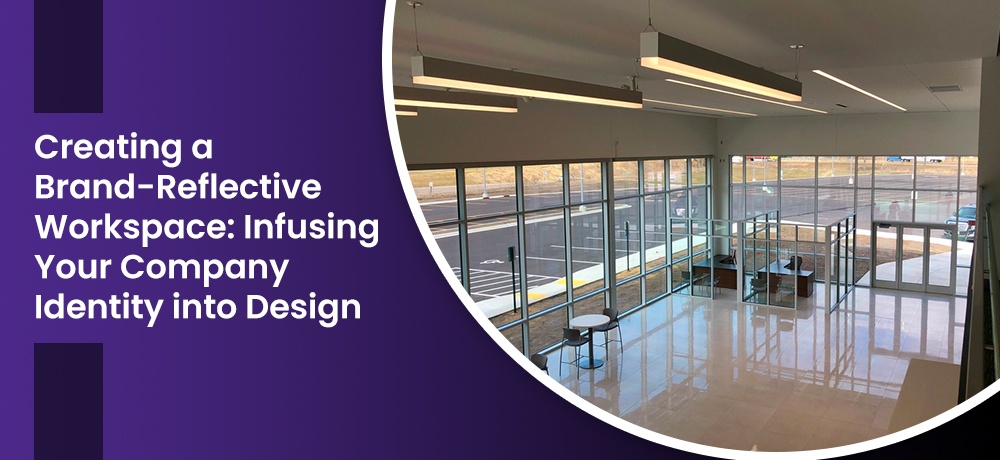Creating a Brand-Reflective Workspace: Infusing Your Company Identity into Design

The physical workspace of a company is not just a functional area; it's a canvas that reflects the essence of the brand. A brand-reflective workspace goes beyond aesthetics; it embodies the company's values, culture, and identity. Every aspect of the design, from the color scheme to the layout, plays a role in conveying the brand's message to employees, clients, and visitors. In this blog post, we will explore the significance of creating a brand-reflective workspace and how thoughtful design can infuse your company identity into every corner of the office.
1.) Understanding Brand Identity:
Before translating brand identity into design, it's crucial to have a deep understanding of your company's brand. This includes the company's mission, values, target audience, and unique selling propositions. The brand identity serves as the foundation upon which the design elements are built.
2.) Incorporating Brand Colors and Visual Elements:
Color is one of the most potent tools for brand identity. The color palette used in the workspace should mirror the brand's color scheme. These colors can be used in wall paint, furniture upholstery, and decorative accents. Visual elements such as the company logo and graphics can be strategically placed to reinforce brand recognition.
3.) Communicating Brand Values:
Every design choice should align with the company's core values. For instance, if sustainability is a key value, incorporating eco-friendly materials and green design principles demonstrates the commitment to these values. A workspace that mirrors the brand's values fosters a sense of pride and purpose among employees.
4.) Translating Culture into Design:
Company culture is a significant aspect of brand identity. If your company culture is collaborative and innovative, design collaborative spaces, open layouts, and breakout areas that encourage interaction and creativity. If the culture is more formal and traditional, design elements can reflect a sense of professionalism and integrity.
5.) Showcasing Brand History and Achievements:
Office design provides an opportunity to showcase the company's journey and accomplishments. Displaying awards, milestones, and historical artifacts in common areas or corridors creates a visual narrative that connects employees with the company's legacy and progress.
6.) Personalizing Workspaces:
Allowing employees to personalize their workspaces within the brand guidelines can foster a deeper connection to the company. Providing branded accessories like notebooks, pens, and desktop accessories adds a touch of the brand to individual workstations.
7.) Creating Branded Meeting and Reception Areas:
High-traffic areas like reception and meeting rooms offer significant opportunities for brand reflection. Design these areas with branded materials, logo displays, and thematic elements that leave a lasting impression on clients and visitors.
8.) Designing Branded Wayfinding:
Navigation within the office can also be an extension of brand identity. Design wayfinding signs and directional elements that align with the brand's design language. This not only helps with navigation but also reinforces the brand at every turn.
9.) Flexibility for Growth and Evolution:
While infusing the brand into the workspace, it's essential to consider future growth and evolution. Design elements should be adaptable to accommodate changes in brand identity, company size, and industry trends.